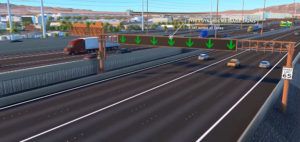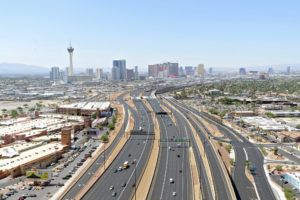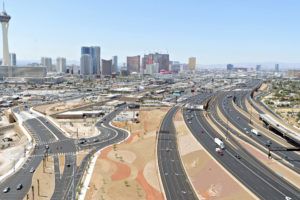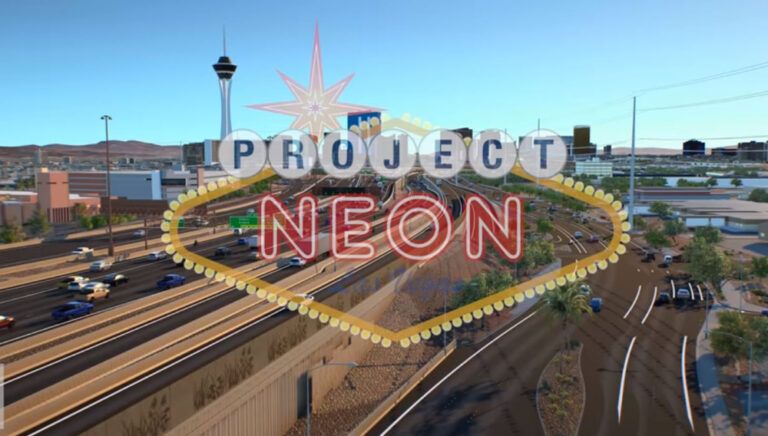The Nevada Department of Transportation (NDOT), along with the Federal Highway Administration (FHWA) and City of Las Vegas, has celebrated the substantial completion of the US$1bn, three-year Project Neon; the state’s largest and most expensive public works scheme ever.
Project Neon involved 717 various companies, including subcontractors and vendors, resulting in 4,000 direct, indirect and induced local jobs. Kiewit Infrastructure West Co. was the design-build general contractor, with Atkins North America Inc. as the lead designer. Project Neon enhanced nearly 4 miles (6.4km) of Interstate 15 between Sahara Avenue and the ‘Spaghetti Bowl’ interchange in downtown Las Vegas. It is currently the busiest stretch of highway in Nevada with 300,000 vehicles daily, or one-tenth of the state population, seeing 25,000 lane changes per hour. The improvements are timely with traffic through the corridor expected to double during the next two decades.
Project Neon entailed 63 lane miles (101km) of new concrete and asphalt paving, with 29 bridges and 10 miles (16km) of drainage improvements. In addition to a newly expanded 20 + miles (32km) long High Occupancy Vehicle (HOV) network, added north-south surface street connections reduce congestion and provide better access into downtown Las Vegas and Symphony Park as well as the Medical and Arts districts. Western Avenue, for example, now extends to Charleston Boulevard where it previously hit a dead-end. Also, a new bridge carries Industrial Road over the Union Pacific railroad tracks between Wyoming Avenue and Charleston Boulevard.
Other upgrades include a new freeway on-ramp at Pinto Lane onto Interstate 15 southbound, plus an entirely reconfigured full diamond interchange at Charleston Boulevard with a new Interstate 15 northbound offramp that now enables westbound travel and direct entry to Grand Central Parkway and Alta Drive/Bonneville Avenue. Martin Luther King Boulevard was revamped for improved north-south operations adjacent to Interstate 15, with an expanded Alta Drive intersection and new signalized connection to Wellness Way in the Medical District. Additionally, the southbound US Highway 95 offramp to Martin Luther King Boulevard was reconfigured for added lane capacity.
Similarly, the Interstate 15 southbound offramp to Sahara Avenue received more space for westbound travel, and the US Highway 95 southbound offramp to Rancho Drive was also reconfigured for added capacity, thereby reducing freeway backups. And 42 next-generation Active Traffic Management (ATM) freeway signs were installed and are currently undergoing system integration testing.
“We adopted a design-build approach that delivered the project nearly a year earlier than originally anticipated for nearly US$80m in time savings for local taxpayers,” said NDOT’s director, Kristina Swallow. “This project was a truly collaborative process between stakeholders for improved traffic safety, efficiency and reliability.”
Governor Steve Sisolak, said, “This critical investment ensures that we meet the state’s growing infrastructure needs while creating thousands of good-paying local jobs that stimulate Nevada’s economy. Project Neon greatly improves traffic congestion, motorist safety and commuter delays, thereby improving the quality of life for all Nevadans while improving visitor experiences to our state.”
Mayor Carolyn Goodman, added, “Project Neon reduces travel delays and creates better mobility in downtown Las Vegas. It also improves motorist safety from reduced merge and weave traffic.”





